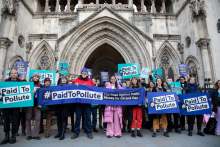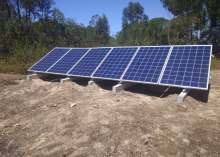If there’s one positive thing to come out of the harrowing events of 2020, it’s the ambition for the UK to #BuildBackBetter and supporting this, the UK Government recently announced new measures supporting renewable energy generation with funding for offshore wind and reinstating support for onshore wind and solar.
But these solutions are mostly big-cheque, centralised, corporate and large-scale measures that will extract value from the UK and have no lasting benefit for communities.
However, there is an alternative approach, and around the UK, people and communities are taking power from the energy supply companies into their own hands, establishing community renewable energy organisations that are owned and controlled by the communities that use them.
What is community energy?
Community energy is a revolution that’s happening everywhere, from rural villages to city suburbs. These pioneering schemes allow people to invest in and be part of local projects that produce clean, renewable energy, owned by the community for the benefit of the community.
They are a great way of democratising clean energy production while putting people who want environmental change in control of the process.
Community energy initiatives allow communities to take control.
They generate more renewable energy that not only provides households with an affordable source of energy and makes much-needed cuts to carbon emissions but that also often generates surplus funds that are funnelled back into providing other vital community services.
A fantastic example of a community energy organisation is Bristol Energy Co-operative which has been running numerous clean energy generation projects around Bristol for 11 years. They currently generate enough energy to power 2,300 homes, with current and planned projects including rooftop solar arrays, ground-mounted solar farms, community microgrids in new housing schemes and a new community hydropower scheme in central Bristol.
There are more than 300 of these organisations across the UK. But the once-vibrant and growing sector was dealt a significant blow last year when the UK government scrapped the Feed-in-Tariff, a key renewable energy subsidy, leaving many new schemes in limbo and curtailing their potential to grow and scale.
Grassroots solutions
With the government scrambling to meet their climate ambitions, and the major energy suppliers doing little to address the problem of global warming now is the time to look to community energy as a model to deliver the low carbon change that people so desperately want.
It is time to re-think how our energy is generated - encouraging both individual and institutional investors to support the rapid development of community energy projects in the UK.
These projects can only really be developed by securing funding that is affordable for organisations to repay in terms of interest and timescales.
This can come from a variety of traditional sources, but much more appealing to many community projects is securing ‘people-powered finance’ e.g.individual people within communities investing in, as well as operating and maintaining, their own clean energy projects that benefit the planet, people and local communities alike.
Community energy initiatives often generate surplus funds channelled into other community services. So community benefit funds are often set up and boosted by income from community energy schemes, meaning that the profits generated are used to create real stakeholder and local value and not just shareholder value.
These funds can finance the development of other carbon-cutting initiatives, such as energy storage or electric vehicle infrastructure, as well as providing resources that are owned and run by the community, without reliance on council or government funding. It really is win/win/win!






